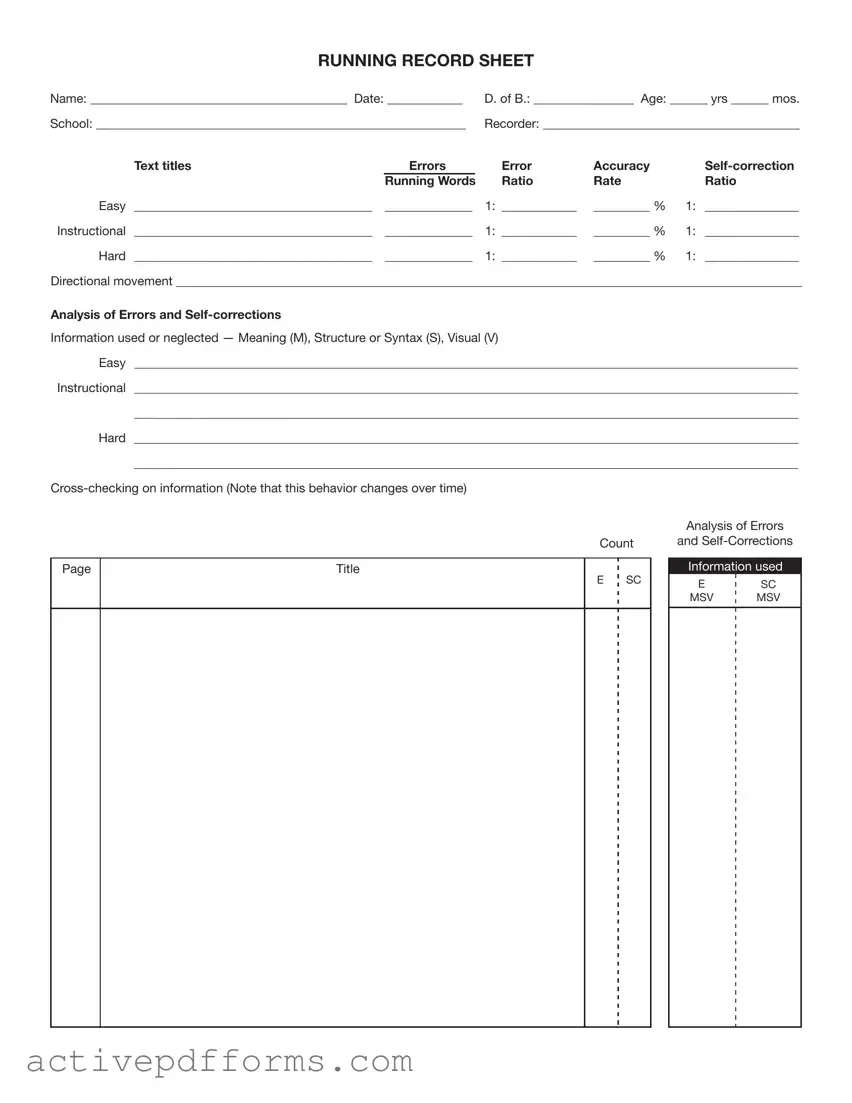Free Running Record Sheet PDF Template
The Running Record Sheet is a comprehensive tool used for tracking a reader's progress by recording errors, self-corrections, and reading accuracy across different levels of text difficulty. It captures detailed information including the reader's name, date, age, and school, along with the specific texts read, categorized as easy, instructional, or hard. This form also delves into an analysis of errors and self-corrections, looking at the information the reader used or neglected, and how their cross-checking behavior evolves over time.
Edit Running Record Sheet Now


